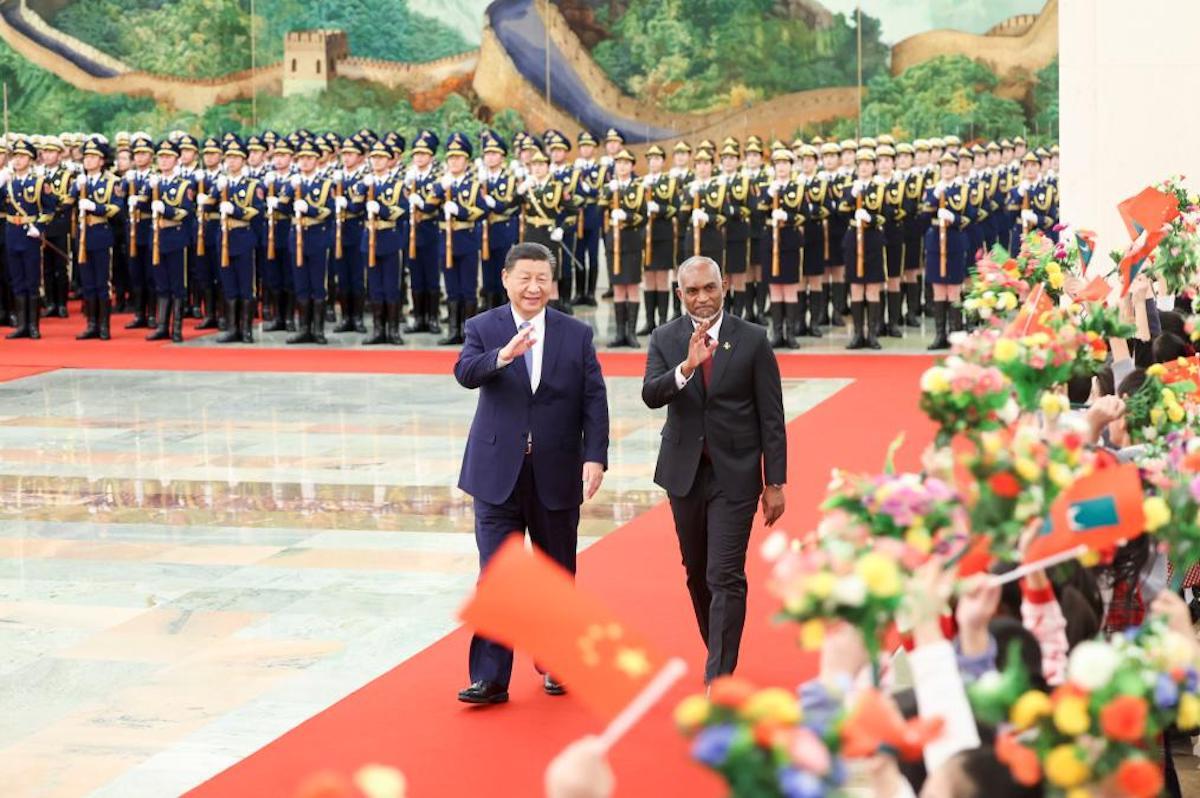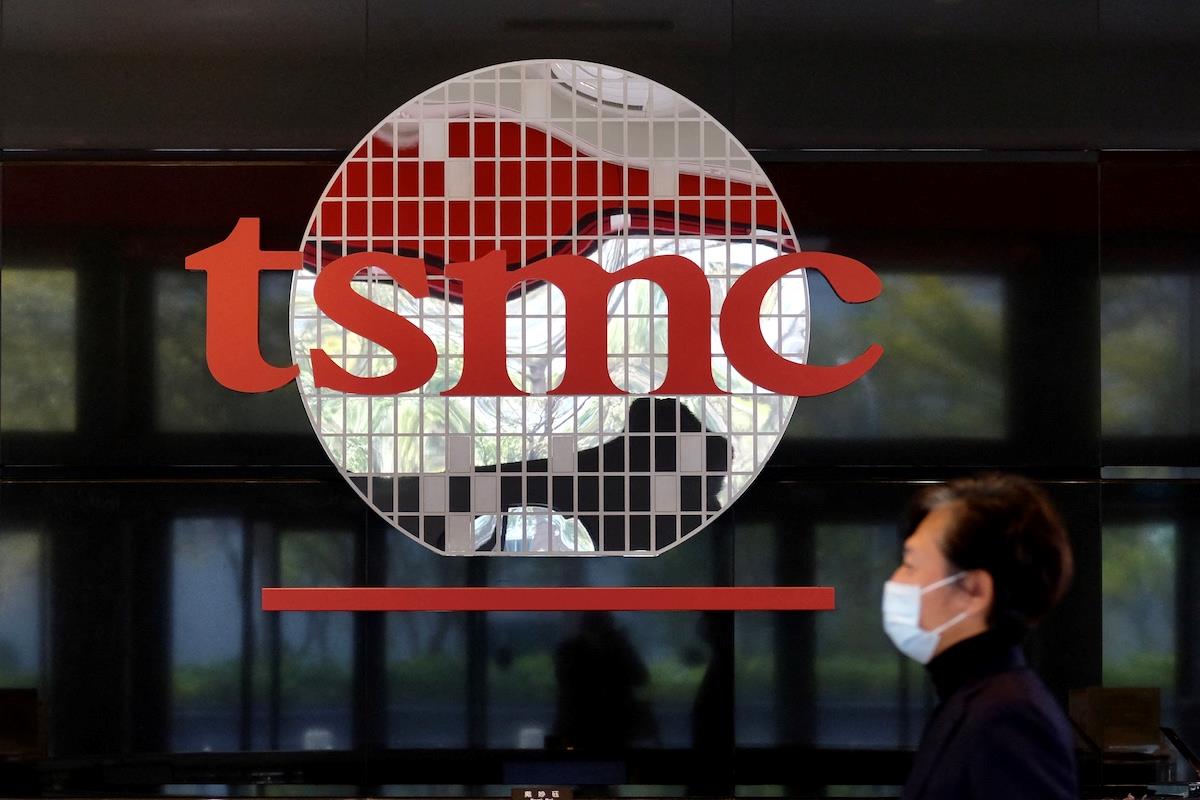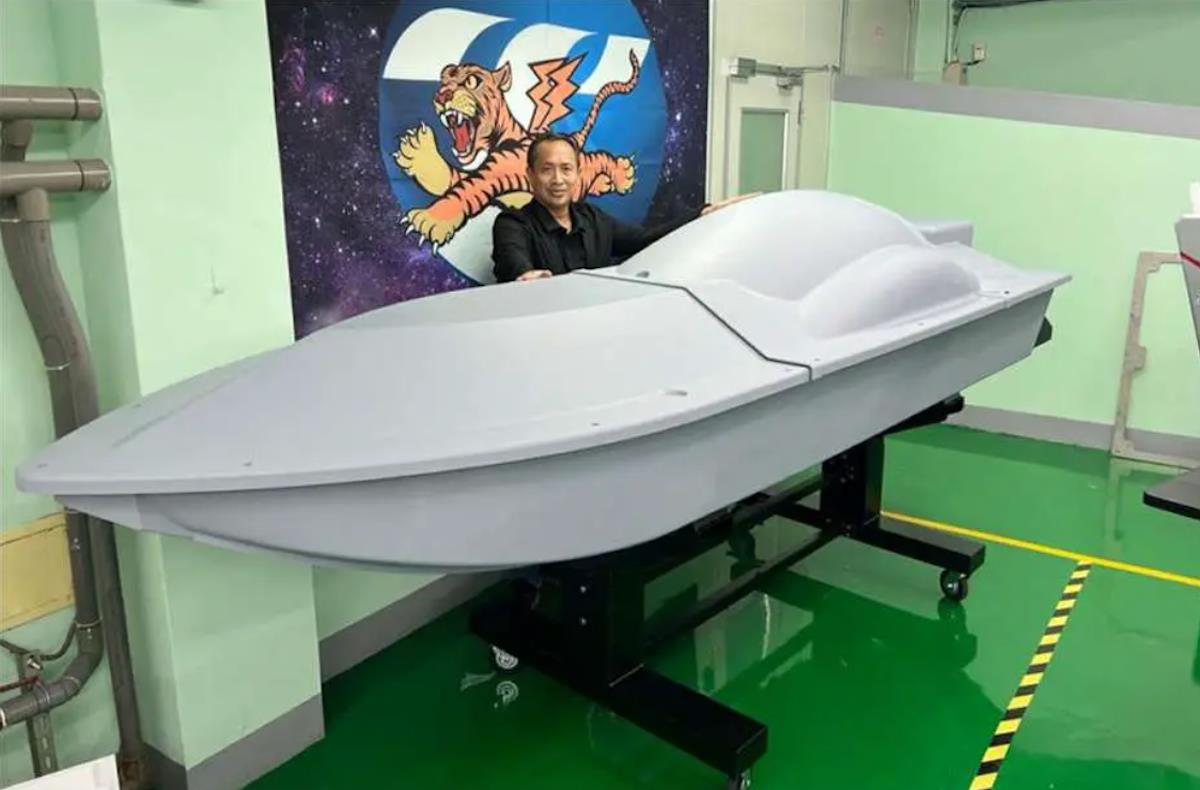
Per Ukraine, Taiwan Boosts Maritime Drone Production
This month, the South China Morning Post reported that Taiwan is looking at adopting Ukraine's use of USVs as a cornerstone for asymmetric drone warfare tactics in the event of a Chinese invasion.
SCMP notes that Ukraine's relative success in the Black Sea, with USVs exacting a heavy toll on Russia's Black Sea Fleet, is an inspiration for Taiwan's military planners.

Ukraine unmanned vehicles hit Russian warship Sergei Kotov in the Black Sea on March 5, 2024. Photo: Defense Intelligence of Ukraine
The report says USVs would serve as one of Taiwan's several asymmetric weapons should the PLA Navy conduct an amphibious assault on the island. It notes that these drones would primarily target incoming warships or those near the island's coastline, as Taiwan's relatively small and obsolete warships cannot take on far more advanced adversaries.
In line with that, SCMP says that Taiwan's USV industry has kicked into high gear, with the National Chung-Shan Institute of Science and Technology (NCSIST) initiating a US$25 million, two-year“unmanned attack vessel” development program, with the production of at least 200 vessels anticipated to start in 2026.
As for the specifications, SCMP says that the USVs weigh less than four tons, measure under 10 meters in length, have a half-meter draft and are remotely controllable from a distance of up to seventy kilometers. It notes that the Taiwanese army would operate them for suicide attacks against PLA-N ships.
SCMP says that Taiwan's private sector is involved in this effort. It mentions that last year, Thunder Tiger Corporation unveiled its
Seawolf 400 unmanned submarine and Shark 400 USV prototypes , capable of carrying strikes with various payloads.
In February 2024, Asia Times noted
that Taiwan could repel a Chinese invasion fleet by deploying hundreds or thousands of USVs from various piers and minor islands.
Chinese warship defenses can be overwhelmed by USV swarms, while personnel transport and cargo ships may be less resilient against USV attacks.

Belt & Road: Chinese techno-nationalism in Maldives

Hidden inflation tanks Biden re-election campaign Biden Gaza policy helps China, hurts US interests
Another advantage for Taiwan lies in USV cost, with one USV estimated to cost about US$250,000, per Ukrainian estimates. With that, Taiwan could purchase 1,000 for 1% of its annual defense expenditures of US$20 billion, with minimal fuel, maintenance, and training expenses. Mass production is relatively easy for Taiwan, given its technological prowess.
However, USVs alone cannot defeat an invasion fleet – they must be supplemented with naval mines, anti-ship missiles, and other weapons. By sheer numbers, USV swarms can overwhelm the defensive systems of a target ship, assuring that at least some of the attacking USVs will strike their targets.
Some USV designs feature a low profile near the water's surface, enabling them to evade detection by shipboard sensors and approach their target more closely.
USVs could now perform sophisticated maneuvers due to advancements in AI and seriously lower adversary morale by breaking their false sense of security, making the latter withdraw their naval forces and misallocate resources to repel such attacks.
Despite USVs' advantages, they may not be the wonder weapon they are touted to be, having several vulnerabilities and drawbacks.
Asia Times has noted that the harsh maritime environment can quickly degrade sensitive electronics, and as USV designs grow in sophistication, more points of possible failure are introduced. Also, as USVs become more autonomous, they become more tempting cyberattack targets.
Also, USVs still require an external communications link, which sophisticated jamming capabilities can disrupt. If an adversary manages to capture an intact USV, cryptographic keys may be compromised.
While Taiwan can manufacture sophisticated AI chips for USVs, China could take steps to seize the latter's strategic semiconductor industry without firing a shot.
In a September 2023 Baker Institute article , Gabriel Collins and Andrew Erickson imagine a hypothetical 2027 scenario in which China's relentless all-domain pressure campaign has resulted in severe political polarization in Taiwan and opened up unprecedented vulnerabilities in Taiwan's economy to China's ownership and influence.
Collins and Erickson note that China could hold live-fire drills around Taiwan and assure critical suppliers and customers of Taiwan's top semiconductor firms that shipments to and from their plants and the power plants supporting the fabs are secure.
They mention that China may require aircraft and ships bound for Taiwan to land or call first at Chinese airports and ports for inspection. Additionally, they state that China may also intercept vessels and aircraft and order them to leave the area.
Collins and Erickson mention that as a result, ships and aircraft avoid Taiwan, the self-governing island's fuel and food stocks run low, unemployment rises, and voices supporting the accommodation of China gain traction. Importantly, they note that in this hypothetical scenario, the US and its allies have refused to transit Chinese exclusion zones to uphold freedom of navigation.
Amidst growing economic, political, and social unrest in Taiwan, Collins and Erickson say that the heads of China's National Integrated Circuit Industry Investment Fund and Semiconductor Manufacturing International Corporation (SMIC) could offer to purchase a 51% controlling stake from Taiwan Semiconductor Manufacturing Corporation (TSMC), whose value has fallen from USD 700 billion to USD 300 billion.

A man walks past a company logo at the headquarters of the world's largest semiconductor maker TSMC in Hsinchu, Taiwan, on January 29, 2021. Photo: Asia Times files / AFP / Sam Yeh
They say that if TSMC and the Taiwanese government accept the offer, China pledges to defend all incoming air and sea traffic from Taiwan. Alternatively, they note that should Taiwan refuse, China can continue unspecified“exercises” indefinitely.
Also, SCMP notes that Taiwan has been slow in adapting to USVs and that in terms of quality and quantity, Taiwan may have already fallen behind some Third World countries.

Sign up for one of our free newsletters
- The Daily ReportStart your day right with Asia Times' top stories AT Weekly ReportA weekly roundup of Asia Times' most-read stories
Asia Times noted in January 2024
that Taiwan's naval modernization is torn between two contradicting objectives, split between a traditional naval force focusing on high-visibility, high-profile assets such as frigates, destroyers, and amphibious assault ships, and an asymmetric force posture.
Taiwan's focus on acquiring high-visibility, high-profile assets stems from the self-governing island's embattled history. The Kuomintang (KMT) fled to Taiwan in 1949 with the fanciful premise of retaking the mainland and has since maintained strong naval and air forces.

The great Kuomintang retreat to Taiwan, 1949. Photo: Wikimedia Commons
That premise was not viable at the start. While Taiwan could not retake the mainland, China could not retake Taiwan back then. Given that reality, Taiwan's strong naval and air forces were all about posturing.
However, the military balance has shifted in China's favor, with Taiwan's high-visibility and high-profile assets of questionable value in repelling a Chinese invasion.
While high-visibility, high-profile assets are needed to provide presence and respond to China's grey zone intrusions, they do not address the overwhelming military asymmetry between Taiwan and China. Those assets will likely not last long if China decides to pursue reunification by force.
Also, Taiwan's investment in those prestige assets while building asymmetric warfare capabilities may leave it vulnerable in both areas. Taiwan's survival depends on its ability to fend off a Chinese invasion with asymmetric means until the US and its allies can intervene, not on its responses to China's grey zone provocations or limited offensive strikes.
Thank you for registering!
An account was already registered with this email. Please check your inbox for an authentication link.

Legal Disclaimer:
MENAFN provides the
information “as is” without warranty of any kind. We do not accept
any responsibility or liability for the accuracy, content, images,
videos, licenses, completeness, legality, or reliability of the information
contained in this article. If you have any complaints or copyright
issues related to this article, kindly contact the provider above.

















Comments
No comment